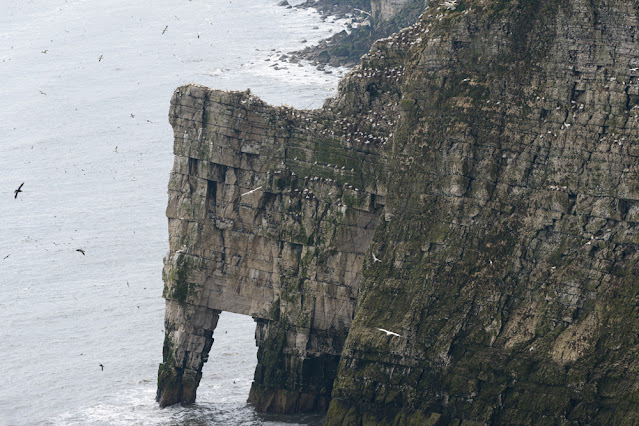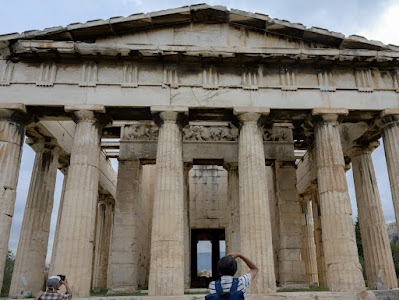An excursion to Bempton Cliffs
After a gap of a year and a half where I have woefully neglected this blog, I have decided to write a post.
It was more a case of having a lot of photos I didn't know what to do with, so I decided this might be an appropriate repository. I am not really a bird photographer, but as my partner Alan enjoys a bit of bird watching, I armed myself with a long lens a little while ago so that I could take a few snaps for him.
We went to Bempton Cliffs in South Yorkshire at the beginning of May when the bird breeding season was getting under way. This is the place to go if you want to renew your faith in the natural world. The birds cover every available nook and cranny of the cliffs and the air is loud with their raucous cries. It is carefully managed by the RSPB with a good car park and visitor centre, so not exactly wild, but I don't think the birds care about that.
The cliffs are home to a large gannet colony. Always impressive birds which were flying past in squadrons like pelicans. There are also guillemots, razorbills (so smart in their black and white suits and horny beaks), fulmars, kittiwakes and we saw a very few rather lonely puffins. There are also a smattering of jackdaws and pigeons and we saw linnets and a barn owl on the field behind the cliff.
As a guide, the gannets are the large birds with yellow heads. The guillemots are the dark brown and white ones, with straight black bills and the razorbills are the black and white ones with large, black puffin like bills. The fulmars are grey and white gull like birds with a strange beak which has a tube on the top with nasal passages known as a tube nose. They have a gland behind this nose which concentrates salt which is expelled through the tube. They were once heavily predated by man for their eggs. This in spite of the fact that their main form of defence is the vomiting up of an oily foul smelling substance over their aggressor. The kittiwake is a gull with a white body, grey back to the wings with a black stripe on the wing. The kittiwake is listed as endangered and the fulmar as a cause for concern.
Here is a selection of pictures of these birds. I'll end with the linnet and barn owl.































Comments
Post a Comment